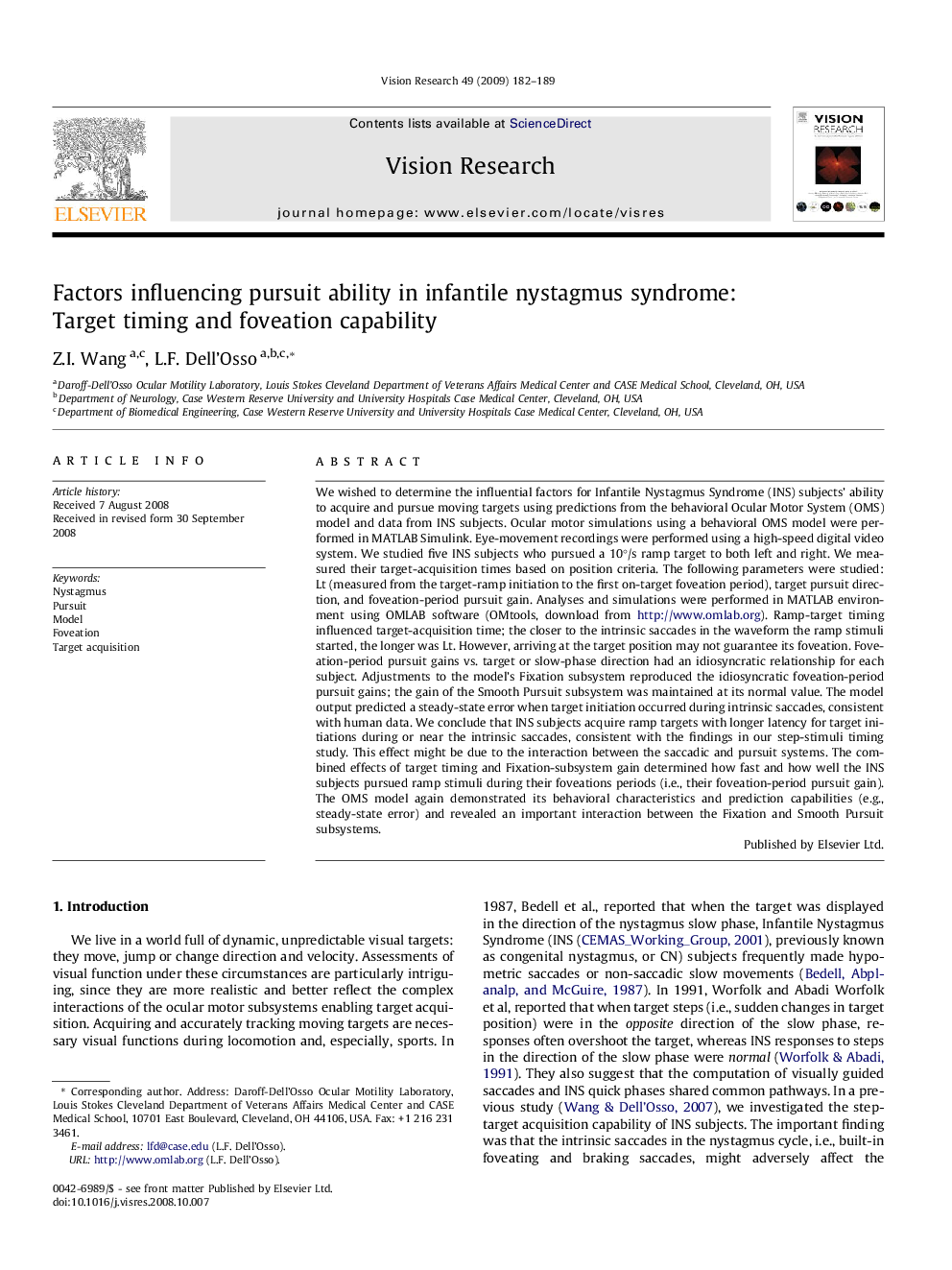| کد مقاله | کد نشریه | سال انتشار | مقاله انگلیسی | نسخه تمام متن |
|---|---|---|---|---|
| 4034862 | 1263489 | 2009 | 8 صفحه PDF | دانلود رایگان |

We wished to determine the influential factors for Infantile Nystagmus Syndrome (INS) subjects’ ability to acquire and pursue moving targets using predictions from the behavioral Ocular Motor System (OMS) model and data from INS subjects. Ocular motor simulations using a behavioral OMS model were performed in MATLAB Simulink. Eye-movement recordings were performed using a high-speed digital video system. We studied five INS subjects who pursued a 10°/s ramp target to both left and right. We measured their target-acquisition times based on position criteria. The following parameters were studied: Lt (measured from the target-ramp initiation to the first on-target foveation period), target pursuit direction, and foveation-period pursuit gain. Analyses and simulations were performed in MATLAB environment using OMLAB software (OMtools, download from http://www.omlab.org). Ramp-target timing influenced target-acquisition time; the closer to the intrinsic saccades in the waveform the ramp stimuli started, the longer was Lt. However, arriving at the target position may not guarantee its foveation. Foveation-period pursuit gains vs. target or slow-phase direction had an idiosyncratic relationship for each subject. Adjustments to the model’s Fixation subsystem reproduced the idiosyncratic foveation-period pursuit gains; the gain of the Smooth Pursuit subsystem was maintained at its normal value. The model output predicted a steady-state error when target initiation occurred during intrinsic saccades, consistent with human data. We conclude that INS subjects acquire ramp targets with longer latency for target initiations during or near the intrinsic saccades, consistent with the findings in our step-stimuli timing study. This effect might be due to the interaction between the saccadic and pursuit systems. The combined effects of target timing and Fixation-subsystem gain determined how fast and how well the INS subjects pursued ramp stimuli during their foveations periods (i.e., their foveation-period pursuit gain). The OMS model again demonstrated its behavioral characteristics and prediction capabilities (e.g., steady-state error) and revealed an important interaction between the Fixation and Smooth Pursuit subsystems.
Journal: Vision Research - Volume 49, Issue 2, January 2009, Pages 182–189